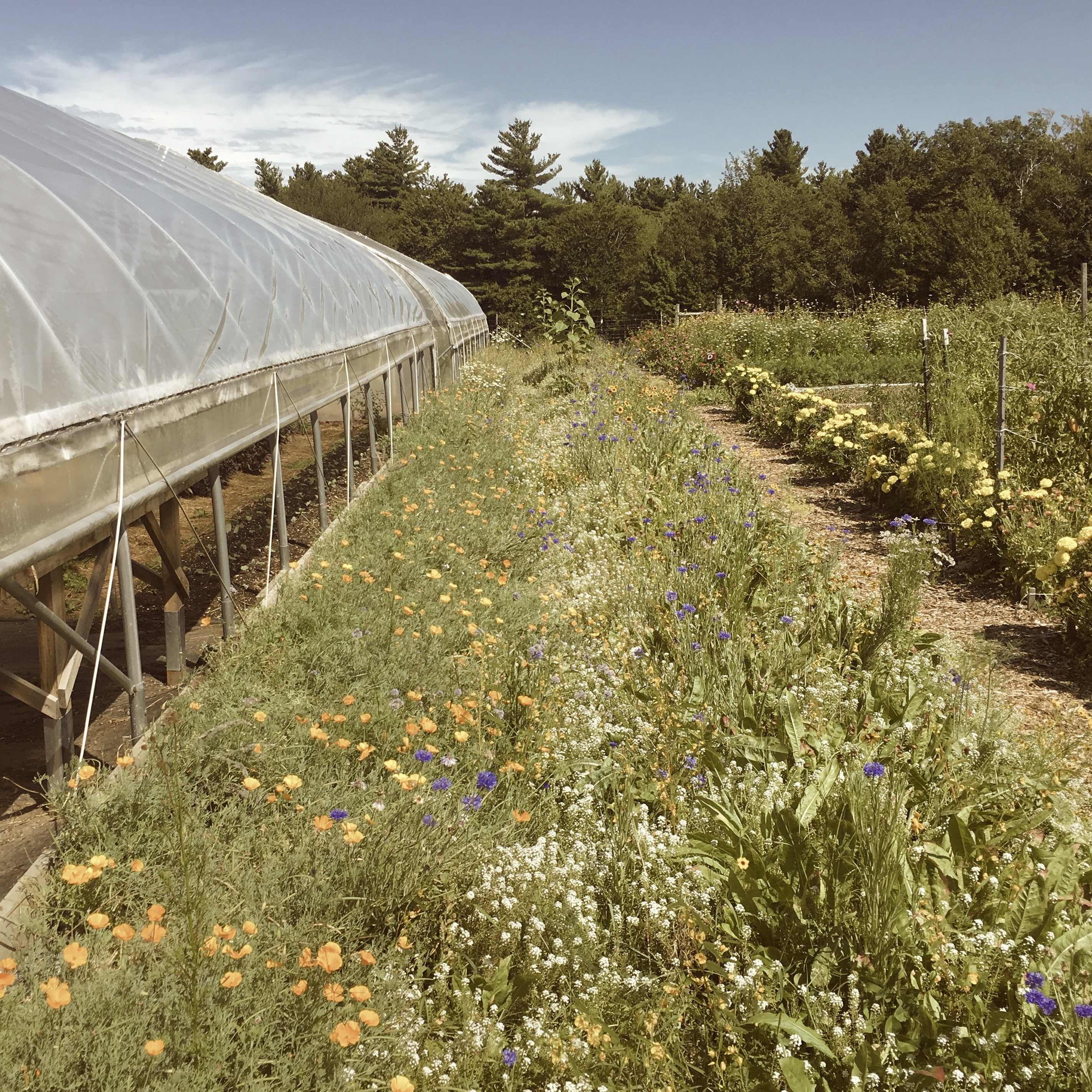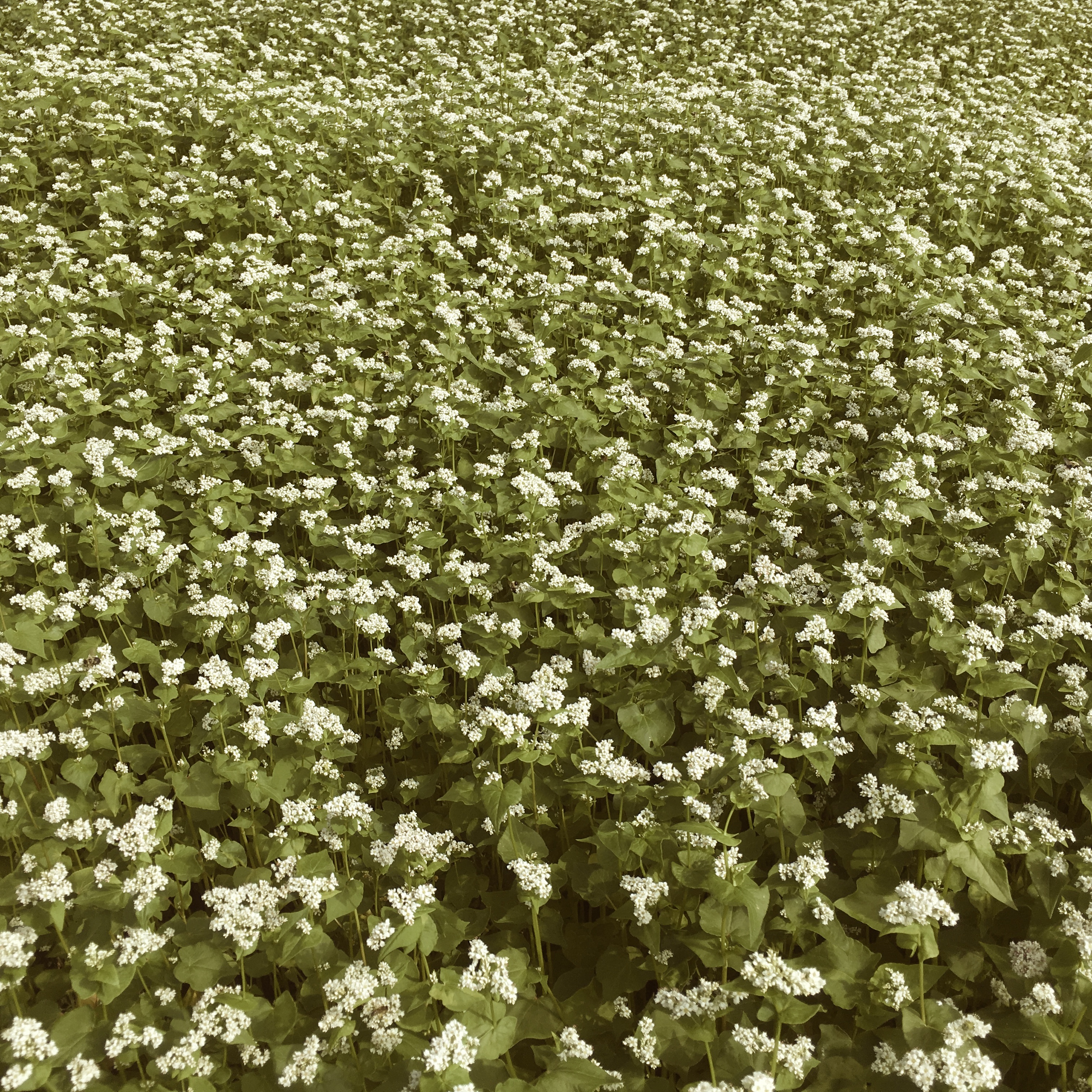
Insectaries
Carrot - Apiaceae Lindl.




Produce
- Carrot - Daucus carota L.
- Fennel - Foeniculum vulgare Mill.
- Parsnip - Pastinaca sativa L.
Pests
- Carrot weevil - Listronotus oregonensis (LeConte, 1857) [Coleoptera: Curculionidae]
- Wireworm - Melanotus spp. Eschscholtz 1829 and Limonius spp. Eschscholtz, 1829 [Coleoptera: Elateridae]
- Asiatic garden beetle - Maladera castanea (Arrow, 1913) [Coleoptera: Scarabaeidae]
- Carrot rust fly - Psila rosae (Fabricius, 1794) [Diptera: Psilidae]
- Aster leafhopper - Macrosteles quadrilineatus (Forbes 1885) [Hemiptera: Cicadellidae]
- Tarnished plant bug - Lygus lineolaris (Palisot de Beauvois, 1818) [Hemiptera: Miridae]
- Saltmarsh caterpillar - Estigmene acrea (Drury, 1773) [Lepidoptera: Erebidae]
- True armyworm - Mythimna unipuncta (Haworth, 1809) [Lepidoptera: Noctuidae]
Predators
- Anaphes Haliday, 1833 sp. [Hymenoptera: Mymaridae] parasitize Carrot weevil eggs
- Ground beetles [Coleoptera: Carabidae] predate Carrot weevil grubs and pupae
- Heterorhabditis Poinar, 1976 spp. [Nematoda] and Steinernema Travassos, 1927 spp. [Nematoda] infect Carrot weevil grubs
- Bacillus thuringiensis subsp. tenebrionis Berliner, 1915 infect Carrot weevil grubs
- Insectivorous birds predate Wireworm grubs
- Heterorhabditis Poinar, 1976 spp. [Nematoda] and Steinernema Travassos, 1927 spp. [Nematoda] infect Wireworm grubs
- Entomopathogenic fungi, e.g. Metarhizium Sorokïn, 1879 spp. [Ascomycota: Clavicipitaceae], infect Wireworm grubs
- Entomopathogenic nematodes [Nematoda] infect Asiatic garden beetle grubs
- Braconid wasps and Figitid wasps [Hymenoptera: Braconidae, Figitidae] parasitize Carrot rust fly maggots
- Ground beetles [Coleoptera: Carabidae] predate Carrot rust fly eggs and pupae
- Rove beetles [Coleoptera: Staphylinidae] predate Carrot rust fly eggs
- Orb weavers [Arachnidia: Araneae: Araneidae] predate Carrot rust fly adults
- Entomopathogenic fungi infect Carrot rust fly adults
- Wolf spiders [Arachnidia: Araneae: Lycosidae] predate Aster leafhopper nymphs and adults
- Entomopathogenic fungi infect Aster leafhopper nymphs and adults
- Parasitic flies [Diptera: Tachinidae] parasitize Tarnished plant bug nymphs
- Leiophron Nees, 1819 spp. [Hymenoptera: Braconidae] parasitize Tarnished plant bug nymphs and adults
- Peristenus Förster, 1862 spp. [Hymenoptera: Braconidae] parasitize Tarnished plant bug nymphs
- Anaphes iole Girault, 1911 [Hymenoptera: Mymaridae] parasitize Tarnished plant bug eggs
- Minute pirate bugs [Hemiptera: Anthocoridae] predate Tarnished plant bug adults
- Big-eyed bugs [Hemiptera: Geocoridae] predate Tarnished plant bug nymphs
- Predatory plant bugs [Hemiptera: Miridae] predate Tarnished plant bug nymphs
- Damsel bugs [Hemiptera: Nabidae] predate Tarnished plant bug nymphs
- Predatory stink bugs [Hemiptera: Pentatomidae: Asopinae] predate Tarnished plant bug nymphs and adults
- Assassin bugs [Hemiptera: Reduviidae] predate Tarnished plant bug nymphs and adults
- Ambush bugs [Hemiptera: Reduviidae: Phymatinae] predate Tarnished plant bug nymphs and adults
- Lady beetles [Coleoptera: Coccinellidae] predate Tarnished plant bug nymphs
- Wolf spiders, Lynx spiders, Jumping spiders, and Crab spiders [Arachnidia: Araneae: Lycosidae, Oxyopidae, Salticidae, Thomisidae] predate Tarnished plant bug nymphs and adults
- Beauveria bassiana (Bals.-Criv.) Vuill. (1912) [Ascomycota: Cordycipitaceae] infects Tarnished plant bug adults
- Parasitic flies [Diptera: Tachinidae] parasitize Saltmarsh caterpillar caterpillars
- Braconid wasps, Eupelmid wasps, Ichneumon wasps, Pteromalid wasps, and Trichogramma wasps [Hymenoptera: Braconidae, Eupelmidae, Ichneumonidae, Pteromalidae, Trichogrammatidae] parasitize Saltmarsh caterpillar eggs or caterpillars
- Lady beetles [Coleoptera: Coccinellidae] predate Saltmarsh caterpillar caterpillars
- Soft-winged flower beetles [Coleoptera: Melyridae] predate Saltmarsh caterpillar caterpillars
- Assassin bugs predate Saltmarsh caterpillar caterpillars
- Entomopathogenic viruses infect Saltmarsh caterpillar caterpillars
- Parasitic flies [Diptera: Tachinidae] parasitize True armyworm caterpillars
- Bethylid wasps, Braconid wasps, Eulophid wasps, Ichneumon wasps, Platygastrid wasps, and Trichogramma wasps [Hymenoptera: Bethylidae, Braconidae, Eulophidae, Ichneumonidae, Platygastridae, Trichogrammatidae] parasitize True armyworm eggs, caterpillars, and pupae
- Cotesia marginiventris (Cresson, 1865) [Hymenoptera: Braconidae] parasitize True armyworm caterpillars
- Glyptapanteles militaris (Walsh, 1861) [Hymenoptera: Braconidae] infect True armyworm caterpillars
- Meteorus Haliday, 1835 spp. [Hymenoptera: Braconidae] parasitize True armyworm caterpillars
- Ground beetles [Coleoptera: Carabidae] predate True armyworm caterpillars and pupae
- Rove beetles [Coleoptera: Staphylinidae] predate True armyworm caterpillars and pupae
- Predatory plant bugs [Hemiptera: Miridae] predate True armyworm caterpillars
- Damsel bugs [Hemiptera: Nabidae] predate True armyworm caterpillars
- Predatory stink bugs [Hemiptera: Pentatomidae: Asopinae] predate True armyworm caterpillars
- Assassin bugs [Hemiptera: Reduviidae] predate True armyworm caterpillars
- Western yellowjacket - Vespula pensylvanica Saussure, 1857 [Hymenoptera: Vespidae] predate True armyworm caterpillars
- Wolf spiders [Arachnidia: Araneae: Lycosidae] predate True armyworm caterpillars
- Insectivorous birds predate True armyworm caterpillars and adults
- Entomopathogenic nematodes, fungi, bacteria, and viruses infect True armyworm caterpillars
Practices
- Wooded edges with nectar sources near crop fields conserve Parasitoid wasps, Minute pirate bugs, Predatory plant bugs, Ground beetles, Spiders, and Insectivorous vertebrates
- Windbreaks near crop fields shelte, Spiders, and Insectivorous vertebrates
- Hedgerows of native plants with nectar sources near crop fields conserve Parasitoid wasps, Ambush bugs, Assassin bugs, Big-eyed bugs, Minute pirate bugs, Predatory stink bugs, Ground beetles, Soft-winged flower beetles, Spiders, and Insectivorous vertebrates
- Field borders of native wildflowers protected from disturbances conserve Parasitic flies, Ambush bugs, Assassin bugs, Damsel bugs, Predatory plant bugs, Predatory stink bugs, Ground beetles, Lady beetles, Soft-winged flower beetles, Rove beetles, Spiders, and Insectivorous vertebrates
- Grasslands, meadows, and pastures near crop fields support Damsel bugs, Minute pirate bugs, Ground beetles, Spiders, and Insectivorous vertebrates
- Sources of alternate foods when prey is limited sustain Parasitoid wasps, Ambush bugs, Assassin bugs, Big-eyed bugs, Damsel bugs, Minute pirate bugs, Predatory stink bugs, Lady beetles, Soft-winged flower beetles, and Spiders
- Perennial plantings of native flowering plants that continually bloom in succession throughout each growing-season feed Parasitoid wasps, Parasitic flies, Minute pirate bugs, Ground beetles, Lady beetles, and Predatory wasps
- Perennial and annual insectaries of flowering plants from the aster, buckwheat, carrot, mint, legume, milkweed, moschatel, rose, and willow families feed Parasitoid wasps, Parasitic flies, Ambush bugs, Assassin bugs, Minute pirate bugs, Lady beetles, Soft-winged flower beetles, and Predatory wasps
- Perennial and annual insectaries of plants with extra-floral nectaries feed Parasitoid wasps and Parasitic flies
- Rock piles, stone walls, brush piles, dead wood, and snags shelter Lady beetles, Soft-winged flower beetles, Ground beetles, Rove beetles, Spiders, and Insectivorous vertebrates
- Living groundcovers, bark mulches, or leaf litters shelter Ground beetles, Rove beetles, Spiders, and Entomopathogens
- Beetle banks shelter Big-eyed bugs, Ground beetles, Lady beetles, Soft-winged flower beetles, Rove beetles, Spiders, and Insectivorous vertebrates
- Cover crops sustain Ambush bugs, Assassin bugs, Ground beetles, Soft-winged flower beetles, and Spiders
- Diverse crop fields conserve Parasitoid wasps, Damsel bugs, Minute pirate bugs, Rove beetles, Insectivorous vertebrates, and Entomopathogens
- No-till crop fields support Damsel bugs, Ground beetles, Rove beetles, Spiders, and Entomopathogens
- Organic fertilized crop fields conserve Ground beetles, and Entomopathogens
- Pesticide-free crop fields conserve beneficial organisms